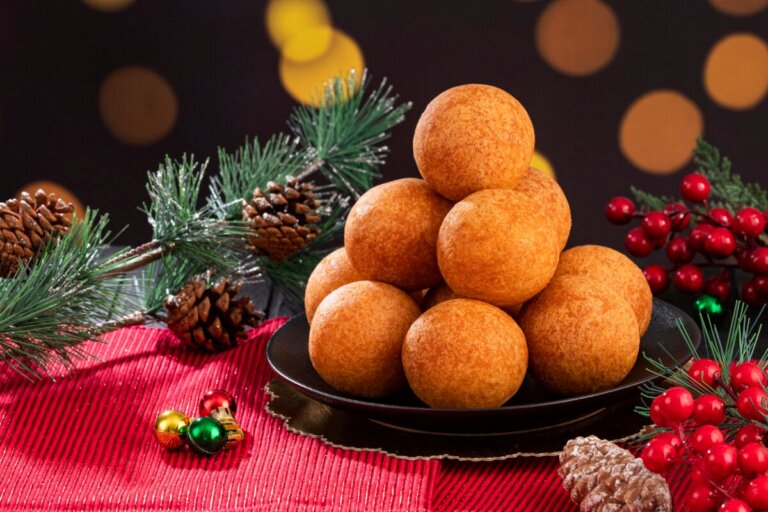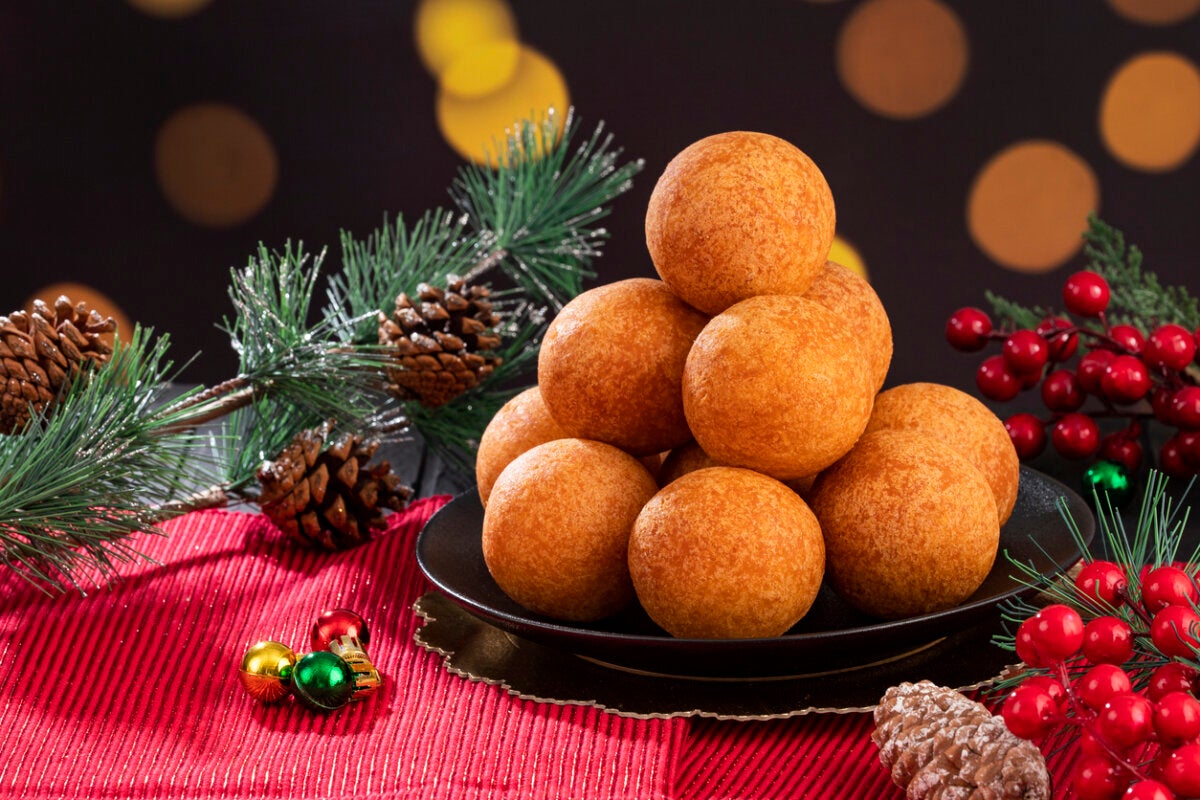Try This Colombian Fritters Recipe for a Traditional and Authentic Taste


Reviewed and approved by the nutritionist Maria Patricia Pinero Corredor
Christmas was just a week ago, and at this time of the year, one of the most awaited delicacies in Colombia arrives: buñuelos (fritters). These little balls of fried dough, crispy on the outside and fluffy on the inside can instantly connect us with the Christmas spirit.
Here, we will show you how you can prepare some buñuelos to enjoy with your family and friends during this holiday season. We’ll also explore why they are such an important part of Colombian gastronomic culture.
We think you may also enjoy reading this article: The Top 10 Countries that Consume the Most Calories Per Day and What The Diet Is Like
The origin and importance of buñuelos in Colombia

Although Colombian buñuelos can be prepared at any time of the year, they are most commonly eaten on Christmas and New Year’s Eve. Their origin goes back many centuries: they emerged in the Middle East in the 12th century A.D., then moved to Spain and, finally, entered the Americas during the process of Hispanization.
In Colombia, coastal cheese fritters are a traditional recipe that has been around for hundreds of years. Historically, they’ve been associated with festivities. In fact, in 1856, Colombian historian José Manuel Groot published an article in which he described how in Bogotá, during Christmas, it was almost obligatory to send fritters smeared with sugar cane honey to friends.
Starting in the 1930s, industrialization massified the sale of flour to prepare fritters and other products. Today, they are a symbol of tradition and Christmas in this country.
Colombian fritters: What ingredients do you need?
But how can you make Colombian fritters at home? To prepare this recipe, you’re going to need to get the following ingredients:
- A pinch of salt
- 2 beaten eggs
- ¼ cup of sugar
- 1 cup corn starch
- 1 cup cassava flour
- ¼ cup warm milk
- 1 teaspoon of sodium bicarbonate
- 2 cups of ground queso costeño or cotija cheese
- 2 teaspoons of unsalted melted butter
- The required amount of canola oil or vegetable oil suitable for deep frying
How to make Colombian fritters at home
Once you have all the ingredients you need, it’s time to get to work making this holiday recipe. Follow the instructions and, if you want to make the most traditional fritters recipe, try to respect the steps to get those round, perfect, and golden balls that come to mind when we think of Colombian fritters. Let’s get to work!
- In a bowl, place the cornstarch, cassava starch, and sugar. Mix gently with a ladle.
- Add the baking soda, salt, warm milk, and the two beaten eggs. Continue mixing.
- Now it’s time to add the rest of the ingredients: the melted butter and the cheese.
- Mix until the dough is smooth.
- As soon as it acquires a homogeneous texture, it’s time to start kneading balls with your hands.
- In a deep saucepan, heat the vegetable oil until it reaches 165 °C. The perfect temperature is when, when you introduce a ball of dough, it stays at the bottom for a moment and then rises to the surface and floats.
- Carefully place the dumplings and lower the heat to medium.
- Fry them until they get a golden color. It’s important to check them regularly to prevent them from burning.
- Carefully remove them from the oil and drain them on a plate with absorbent paper to remove the excess.
- That’s it! Serve and enjoy with your family some delicious traditional Colombian fritters.
We think you may be interested in reading this, too: 3 Christmas Dishes and Desserts Around the World
Tips for making the best Colombian fritters
Here are some extra tips you should keep in mind when cooking your fritters:
- Fritters are salty, so the ideal cheese for this recipe is a salty, hard, and dry cheese, such as grated costeño. If you use a different cheese, the fritters may be too sweet.
- If at the moment of making the mixture, you may notice that it’s getting too dry, add a little milk. If the texture is too wet (this can happen when the eggs used are very large), add more flour.
- You can choose the size of the fritters, although it’s better not to make them too big, as they will not cook well inside. Also, it’s important that all the balls have a similar size so that the cooking is even.
- The oil should be heated at a high temperature at the beginning, but then lowered to medium heat so that the dough does not burn and the fritters do not burst.
- Leave enough space between them when frying. This will ensure even cooking and you can turn or move them around while they are cooking.
- If you would like, you can get the commercial mix ready to prepare them in less time. In these cases, follow the instructions on the package.
- The crunchy texture of their outer layer is more accentuated when they are freshly made, so don’t wait too long before trying them.
Colombian fritters: A quintessential Colombian Christmas recipe
Buñuelos de queso costeño, which along with corn custard are part of the Christmas amasijos, are the stars of this holiday in Colombia. This traditional recipe has been passed from generation to generation, bringing the warmth and authenticity of the gastronomy of this country.
As you can see, its preparation is not complex at all if you follow the step by step. We encourage you to gather the necessary ingredients and get to work with these delicious bites to surprise your family and friends during this season. Happy holidays and buen provecho!
All cited sources were thoroughly reviewed by our team to ensure their quality, reliability, currency, and validity. The bibliography of this article was considered reliable and of academic or scientific accuracy.
- RTVC. (17 de diciembre de 2020). La historia detrás de los platos típicos de Navidad. https://www.rtvc.gov.co/noticia/historia-platos-tipicos-navidad
This text is provided for informational purposes only and does not replace consultation with a professional. If in doubt, consult your specialist.








